The Indirect Fires Modernization
The first RFI for IFM has dropped and it's far more expansive than I thought
Sometimes the world throws little surprises at you that make you wonder if you've been thinking the wrong way on things. Those who regularly follow me will know that there are certain projects that I talk about more than others. IFM was one of those.
The Canadian Armies artillery modernization has been a hot button issue, only exasperated by the current war in Ukraine and the glaring reality that the RCA was ill-prepared, with its collection of M777, outdated and barely operable 105mm howitzers, and assorted collection of 81mm Mortars to handle the potential peer-on-peer conflict that was facing us on the Latvian border.
My impression was that IFM wasn't releasing it's RFI for a while. The original idea was to release it near the end of 2024, but it was pushed back as to allow the project more time to identify requirements. I was under the idea that we might not see it until closer to the Winter of 2025, at earliest.
So imagine my surprise when they decided to drop it on a random Wednesday, and make the documents publicly available to boot! It was a nice surprise in a period where it felt like new projects were in a bit of a drought. That's a commonly occurring phenomenon, as many who follow me know, but this one felt excruciatingly long. That has been supplemented by several big awards like ERC, FLIT, and FaCT but it isn't quite the same.
With the release of IFM, we now have a much more clearer picture of what the Army is looking for as the future of fires (Wink Wink) and it is far more extensive than I had been led to believe it would be.
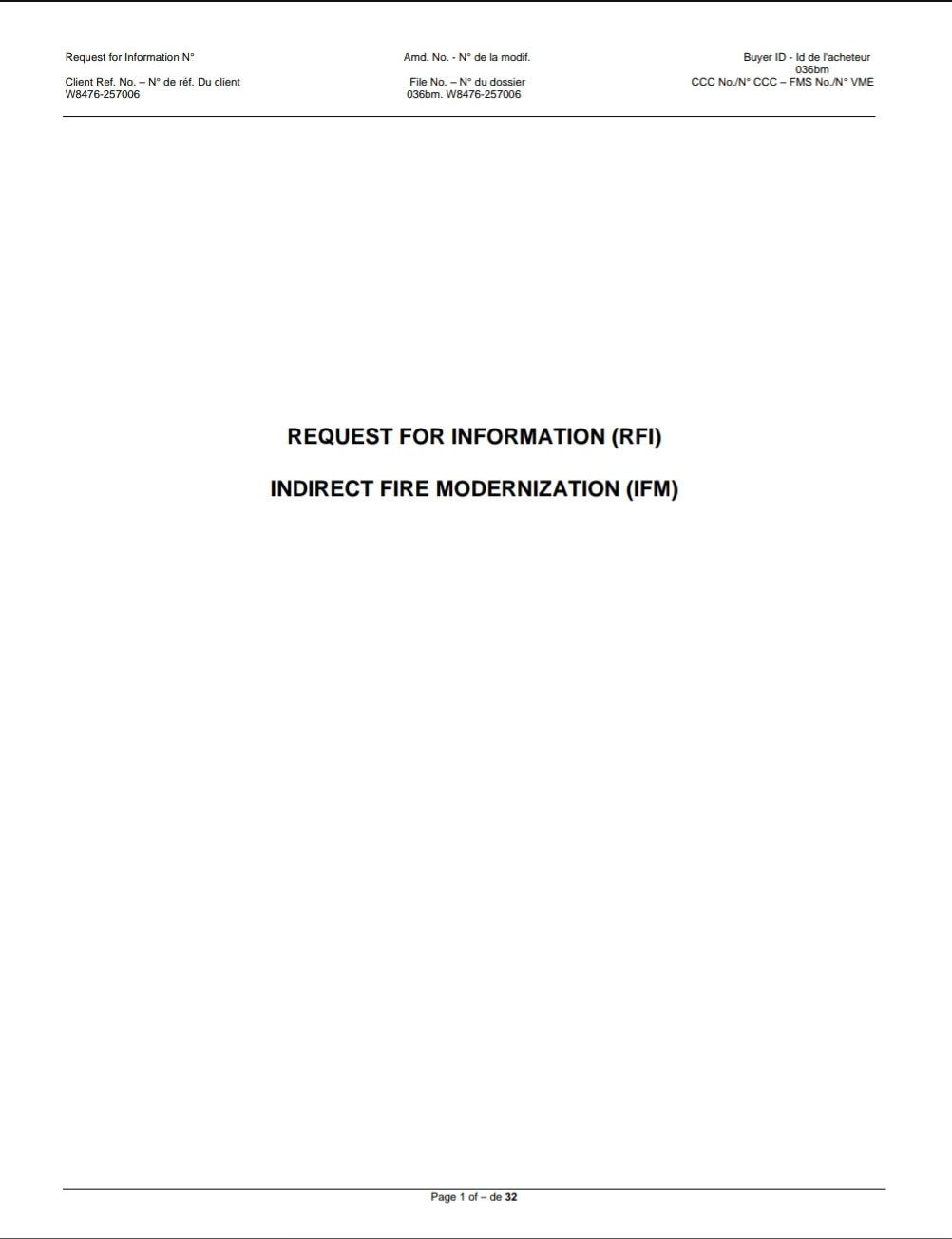
The RFI
This is the first RFI we have had drop for IFM, and it sets out to build upon the requirement laid on in Our North Strong & Free to modernize Canada's artillery capabilities. I shall note that this is seperate from the LRPF project that aims to acquire a rocket-based artillery system. If you haven't, there was an update on the project two weeks ago in the newsletter.
This RFI aims to assist in finalizing the requirements for the broader project, which remains in the Options Analysis phase. If you don't know, sometimes multiple RFI are used to gauge industry and help finalize broader requirements. LRPF did this two years ago, for example, while LUV has done it a staggering four times.
There will be another, more detailed RFI to follow that will break into the technical details once the options have been more laid out. Sometimes, you can get a string of RFI that slowly build upon these requirements until we reach the ITQ/RFP phase.
As such there is no need for a manufacturer to provide a solution for all the laid out proposals. This isn't a project really, more an initiative as we've seen with projects like GBAD & LUV, though unlike those this isn't requiring they present to all the demands.
The RFI also provides us an updated snap-shot at the current capabilities of the RCA, and while they aren't terribly different to what we expect, it is nice to receive these occasional updates. So, what does Canada's artillery force consist of? Let's go down the list:
33 x M777 155m
93 x C3 105mm
28 x LG1 105mm
218 x 81mm Mortars
Of these options, the C3 has been relegated to shooting at mountains and training, while this update provides our updated numbers after having donated four of our M777 in support of Ukraine. Those at the time might remember the promise of replacements for those donated howitzers. That ain't coming sadly, even with the M777 production line coming back online.
I should also note that the proposed Howitzer UOR is also all but dead as the focus is put on broader modernization instead of mitigation and relying on UOR to plug gaps. Remember, every UOR takes money and people from somewhere else, and might not provide the desired solution that is wanted. As such, it can be more beneficial at times to take the capability gap at times.
The RFI lays out two primary pathways for how where IFM might go, but before we get there let's look at what else is included in the initiative. There is obviously he usually you would expect, ammunition, fire control systems, In-Service Support (ISS), command/ammunition vehicles (This will likely end up seperate), training services, etc… Those things are standard if you've been following along with me and my previous post on the Future of Fires.
There is also mention of upgrading or constructing new infrastructure in support of IFM. There isn't any details given on what exactly this might be, but we do have a lost of potential locations, none of which will surprise those of you in the know:
Shilo
Petawawa
Meaford
Valcartier
Gagetown
Again, not very shocking of a list, but I thought I would give mention of it. The real kicker here comes in the form of the munition requirements. There is not only extensive demand for new munitions to accompany these new systems, but a direct Munitions Supply requirement attached to the RFI. Is this a shock? Not really, it's certainly been established that new munitions coming in will have this requirement, perhaps not as much as I myself would like, but it will still be there.
What will this include outside IFM? We don't fully know, obviously LRPF is a different beast for these things, but there is certainly a desire in the Army, and beyond, for the local production of munitions as a requirement. Technically the Navy did this first, but I digress.
As part of IFM, Canada will aim to license new munitions as to integrate them into the Munition Supply Program. This will not be adding onto the current suppliers, instead, manufacturers are encouraged to enter into partnerships with our two current suppliers of large ammunition -GDLS-C and IMT Precision to assist them in manufacturing and providing future support, including for future munitions that might come to market.
This helps integrate IFM with Canada's current Continuous Sustainment Strategy, providing not just access to new munitions locally, but securing the rights to manufacture future munitions as well. While it isn't set out as a need, it is quite clear that it will likely develop into a requirement as the RFI continue to drop. I for one support this, as my latest piece on Production laid out this exact requirement.
Beyond that, Canada is fairly open to accepting new standards and munitions. We do get an initial list of required comparable munitions in the RFI, and it features some notable exclusions. The M107 & M795 will be retained and are expected to be integrated onto any new howitzer acquired. Canada would also like to keep our current fuzes and primer if possible. This comes as we are looking at establishing a new domestic fuze supply.
Existing 81mm munitions will also be retained, not really much of a shock, while new 120mm mortar ammunition will need to be acquired as we do not have a current supply. We will not be acquiring a new 105mm capability, and as such no munitions for it are included here. There is a notable omission of other rounds, such as the M982 Excalibur, which IFM aims to potentially replace. In fact, Canada is looking at quite a bit in terms of new munitions.
This isn't just including 120mm either, but an entire refresh of our 155mm munitions that we currently use. So. What are we potentially looking at?
52-calibre 155mm propellant
Primers & Fuzes (if in-service options are not compatible)
New 155mm precision guided munitions or fuze kits.
Extended Range Munitions (Base Bleed and/or Rocket Assisted Projectiles)
Advanced Projectiles (i.e. Sensor Fused Anti Tank Munitions)
New 120/81mm operational and/or training munitions
As I said, for all intents and purposes, we will be looking at an entire refresh of the munitions we currently use, along with the expansion of new munitions, such as Anti-Tank munitions like BONUS. This is a welcomed development. The 107/795 are in desperate need of modern munitions to complement/replace them. We also need to have modern munitions being developed for us, here in Canada, not just produced and sent over the border, as we've discussed previously.
Now, we can get to the juice of the matter. What systems are we looking for? I have been under the long impression that there would be a voice to make - 120mm Mortars or 81mm Mortars.
At the least, it seemed like one or the other would win out here. While the 81 is already established, there is a certain capability that the 120mm brings to the table that is hard to ignore, especially in supplementing the 155. The RFI does not rule this out, but provides the pathway where we might see all three capabilities acquired.
Currently, there are two options presented on the table for IFM:
OPTION I:
80-102 x 155mm Self-Propelled Howitzers
99 x 120mm Mortars integrated onto the ACSV chassis
85 x 81mm Mortars integrated onto future Light Vehicles.
OPTION II:
80-102 x 155mm Self-Propelled Howitzers
133 x 81mm Mortars integrated onto future Light Vehicles
The minimum requirement will not include 120mm Mortars, and will instead supplement this capability with extra 81mm Mortars. The number of 155mm systems remains the same, a staggering five Regiments worth, an absolutely massive increase from the ~30 M777 in service without counting the supplementary 120mm Mortars that will come with them.
This is before we speak on other modernization efforts in the works. The Long-Range Precision Fires project aims to procure two regiments (~28) of HIMARS sometime around 2030.
We also have the various Ground-Based Air Defence projects in the works. That will be an extra two batteries of SHORAD/MRAD coming online around the 2030s
Point is, if you're the RCA, you're going to have a busy time come the 2030s, at least if CAF is allowed to take its Maximalist approach to acquisition.
There is a reason why CAF aims to so eagerly go beyond the current authorized strength. There will be no shortage of needs when it comes to having people available, and even at full authorized strength, it is hard to believe that the current pool of manpower will be enough to sustain the plans.
That though isn't why we are here, so we leave this topic for another day. While many might complain that these numbers still feel small against other allies, the substantial increase pits us in a place where we can be in the conversation of being at similar numbers to our European allies.
Canada is not a land power. We put the vast majority of funds and support into the air and sea. It should come as no surprise that the army does not receive the support to match the levels of Germany, the United Kingdom or even Spain.
This increase though does out us at a healthy level just below them, and is far more substantial than what I had heard before. This sets up with a substantial Fires capability, able to support both our commitment to Latvia but also at home and further abroad.
Of course, people will ask, is this funded? And the answer is that no, it is not, but given how high Fires has ranked in CAFs priority list (Always in the top five), along with its role in ONSF, gives me confidence that we will see this go through without much issue.
But what systems are in contention? This is the question that everyone has been asking since the project was first revealed, and its been a tough road to this point, full of internal conflict over just what capability, and platform is needed.
Lets break it down!
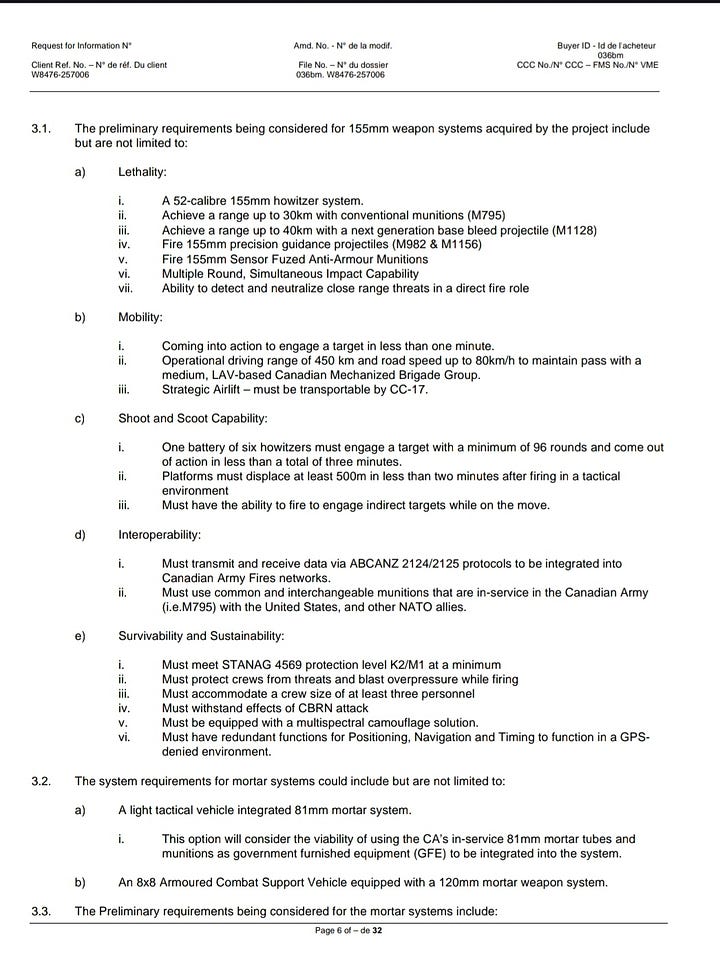
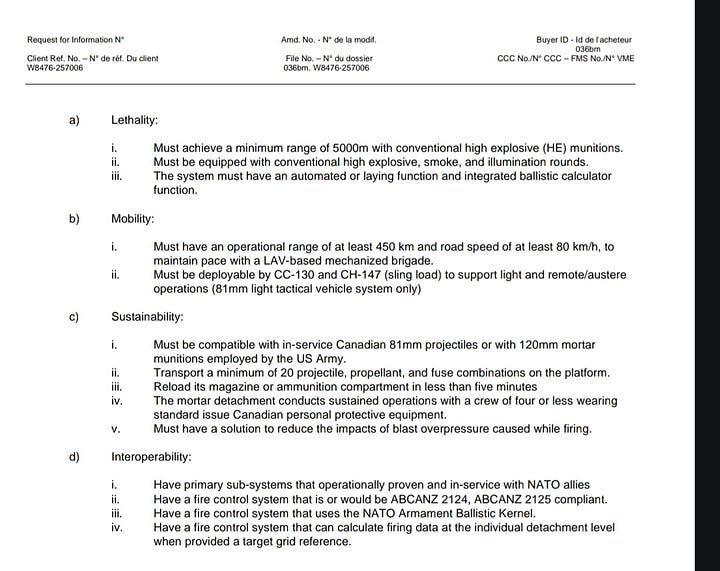
The requirements and contenders
Let’s go down the list from the top, but first, I’ve provided the requirements from the RFI above. Why? It’s because admittedly, I did not feel like typing them all out.
Decry me, but I believe in sharing the source (Did that work?) and what better way to show the requirements than directly?
Anyways, let’s go through it!
The most significant and largest part of the RFI is the acquisition of new 155mm Self-Propelled Howitzers. This acquisition is a long time coming and has been this subject of many debates primarily between what the RCA wants and what the wider army expects.
The best debate is most prevalent in asking whether this new platform should be tracked or wheeled. The RCA has stood by that they want a tracked system while the wider army preferred going with something wheeled.
There is an issue with going with a track platform is that all of our current track maintenance is consolidated.
This was a conscious decision primarily driven by the fact that the only tracked platform that we have is the Leopards, and that isn’t changing on the wider scale.
DAME is a different category here, and the Army shall remain primarily a wheeled force. When you add on the additional cost, maintenance requirements, and adding an entirely new platform? It is a bit to much effort and to much of a difficulty to integrate a tracked platform.
The RFI does not exclusively rule out Track platforms, but does set out requirements that eliminates the Tracked platforms available on the market.
More specifically, the need to maintain a sustained speed of 80KM/Hr is just not possible for any of the current tracked platforms in service, such as the K9, M109A7, or PZH-2000.
You'll notice this a lot in recent RFI, if you read them. They won't eliminate options, but will stake the RFI against them, and make no mistake, that is very clear here.
This top speed is possible for almost all the possible wheeled platforms in service, minus a few, though we can expect that any turret will likely be integrated onto one of our own platforms anyways.
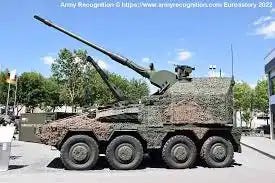
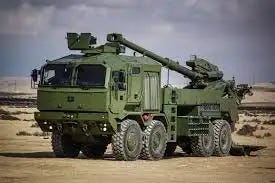
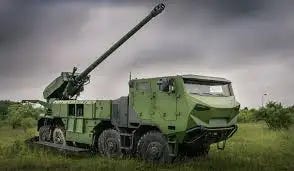
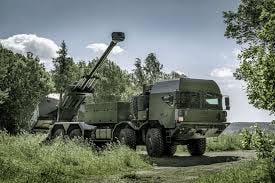
So, while the Archer and it's Volvo chassis might not be able to reach that top speed, it's doubtful we would go with that over the HX, which is already entering service.
I won't also deny that the K9 does have a wheeled variant that has been proposed, so it can't be entirely eliminated, even if it isn't in service in that form anywhere.
So, we've established that we need a wheeled howitzer, which there are absolutely no shortages of to pick from with Archer, Caeser, AGM, Atmos, K9 still somehow….
Many of them pass the requirements desired, commonality with NATO commonality, C-17 transportability, and range can all be met by the in-servixe systems.
They can all fulfill the direct fire role, even if some are more heavily limited than others. They can all sustain the battery fire of 96 rounds in under three minutes, although Caseser and Atmos will be cutting it close.
There is also some misconception that the RFI calls for a crew of three, but that isn't true. It merely calls for being able to accommodate at least three people.
Indeed, at first glance, this might appear as if it was a fairly open competition. There might be some issues with sustainment and protection requirements, but overall, all the potential options keep themselves in the running.
That is if it wasnt for one piece in the RFI that sets this entire thing up for one winner, and that is the ability to fire on the move…
This might seem somewhat non-consequential at first glance but the ability to fire when moving is actually a unique capability that only one platform has demonstrated - the RCH-155
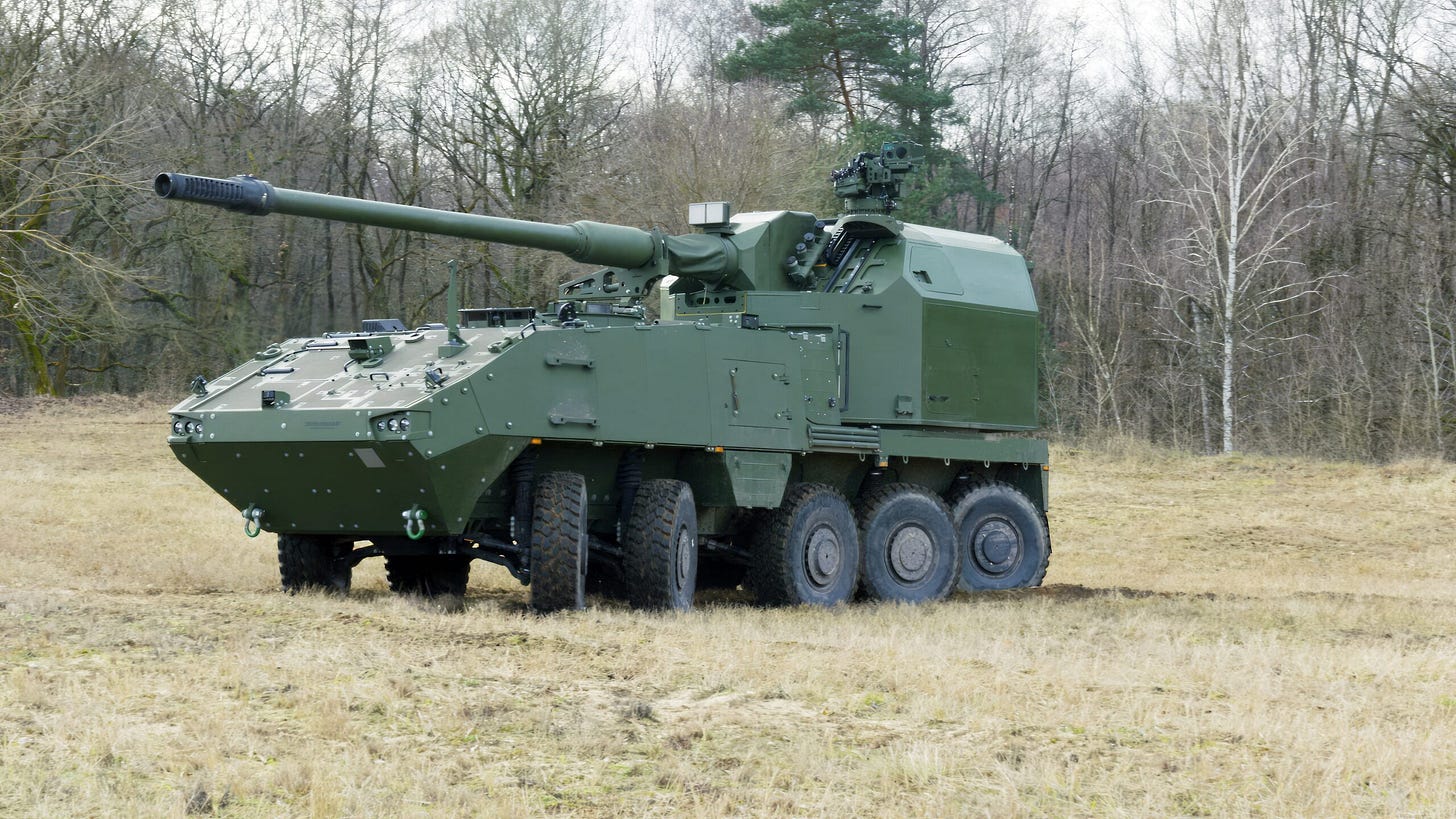
Based off the Artillery Gun Module from KNDS Germany, the RCH-155 is quickly becoming a NATO favourite.
An unmanned, automated system able to be easily integrated onto multiple different platforms, including trucks, 8x8, and 10x10 armoured vehicles.
With a crew of two, a dedicated direct-fire mode, and an extensive protection suite. The RCH-155 not only is the only platform that openly advertises its qualification of all the RFI requirements out the gate, but is also the only one advertised with the ability to fire on the move.
In fact, it’s quite literally its most heavily advertised feature as the first platform capable of doing this, something that it remains in that unique category for.
NBCR protection? Advertised. Multispectral Camoflauge? Advertised. Ability to operate in a GPS-denied enviornment? Advertised. It's truely as of they lifted the requirements straight from the KNDS website!
In fact, the requirements on the website and the RFI even match up to each other on placement! It's almost spooky how much they align with each other. The moment I noticed it I quote literally called my wife over to verify what my own eyes were seeing.
I won't say that they pulled a HIMARS and wrote out the RFI specifically for RCH to pass, but it is quite suspicious how its the only one that meets all the requirements, including such a unique one as firing on the move.
It isn't a shock though, RCH has been ordered by the English and Swiss, with the Italians and Germans also set to place an order. There is also further interest from the Spanish, Dutch, and Americans.
It's hard to blame them either. RCH-155 quite literally advertises itself as above the competition. It has among the highest rates of fire, a larger magazine capacity, it's smaller in size than the competition and entirely automated.
That's before we get into the firing on the move and direct fire capabilities. It is quite literally a beast if a system that blows away most of the competition, like the Semi-automatic fully manned Caeser.
Traditionally, the module has been installed on the Boxer chassis, though the Swiss plan to integrate it onto a GDELS Piranha 10x10 chassis. This is the likely route we would take as well.
While the order is substantial enough to order Boxer if we wanted, it makes little sense to go with an entirely different family for the base chassis here. The ACSV isn't likely capable (nor would I) of a chassis to handle this module when compared to the larger and heavier Boxer.
As such, we COULD try to use the larger LAV 700, but it seems much simpler to simple take the 10x10 chassis that is already being integrated with than to spend the extra time and effort.
And while the LAV and Piranha are not identical, they do share enough commonality and fall under the same family tree, which also means that the 10x10 could likely be produced in London.
They also come able to handle any of the modern American or European munitions, including some commonality with the RCN with Vulcano, or the Anti-Tank BONUS rounds. Truely, it sounds like a perfect fit, doesn't it?
Integrating the AGM onto a ‘LAV' chassis ensures that it can keep up with the rest of the armored fleet, while easing the mantinence requirements and overall supply chain. I can imagine that was a major factor when looking at this.
Even if not, the module is still more than capable of being integrated onto a number of other chassis, such as the Zetros or HX platforms that will be soon entering service.
To me, this doesn't even feel like a competition, at least not with this initial RFI. The wants are to centered on the capabilities of one platform to turthfully consider the other options on the table, not that it's necessarily bad, assuming that there is a capable platform that is taking that spot, and its something that is in demand now.
Similarly, I will call a shot on the Mortar requirements. While the 81mm Mortar aims to keep the current stock in service, the need for a 120mm is a new capability to be acquired, one we have never had before.
To me, there is also one one platform that easily fits this requirements, even though yes, there are multiple out there that could fit. That is the Patria NEMO.
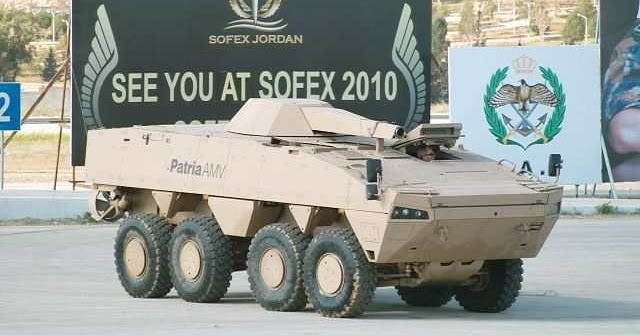
The Finnish designed Mortar, similar to the RCH-155, is an unmanned, modular turret, designed to be easily integrated onto a number of vehicles, boats, even containers if you like.
It is also quickly gaining interest across NATO, with countries like Germany, Spain, the UK, and America (sound familiar?) all showing interest in the system.
It has also already been integrated onto the LAV chassis thanks to an order from Saudi Arabia. It's modular turret could easily be added onto the ACSV chassis quickly and with minimal modification to the platform.
Aligning our choices with our allies, and creating NATO-common platforms, will help drive down costs, allow us valuable training opportunities, and allow us to easily integrated with our allies in Europe, especially those involved with us in EGP Latvia like Sweden, Spain, Italy and Czechia whom have all expressed interest in one or both of these options.
This also opens up renewed opportunity for Canada to jump on the supply chain with having a common platform with our allies, being able to provide materials, parts and munitions from a common pool.
We won't get into actual system production, though I would certainly love it myself, I wouldn't get to overly hopeful for it. That doesn't mean there isn't room for crticial component production as well.
Of course, despite the lack of competition, we shouldn't take this as set in stone. There is possibility for the RFI to change, as well as still plenty of time for things to change in general.
But I do think this is something to keep a close eye on. These are well needed capabilities, ones that CAF has been constant in the demand for. I don't think this project is going anywhere downward, so to say, but there is time for things to change.
Otherwise I am very happy to see this. By the end of things, Canada will have a large, modern Fires capability, well spread out between lighter 81mm Mortars to modern long-range strike capabilities, along with everything in between.
It is such a capability increase, that it almost feels fantastical in a way. I often say that CAF has adopted a maximalist attitude. They aim high, very high. It's clear that we wamt to we more, we want to be capable of being Expeditionary, of operating independently from our allies.
That takes a lot of time, money and a huge bucket of political will. Is that possible these days, among a pressing Trumpist claim on our country and a deteriorating global situation? Its certainly the best time to try.
Now, I am a bit of a spoiled boy, because this would ALSO be a great time to reinvestigate the divestment of the 60mm Mortars, but that is something for another day!




Hey! Your welcome! This one was kinda rushed through, wanted to get it put while relevant, so I did skip on my usual discussion and freestyle 😅
1) The armies primary focus with a lot of these procurements is Expeditionary, at least in theory. You'll certainly see a permanent, rotational deployment as part of EFP Latvja There's a pretty good idea of where everything is going.
This might sound like a lot, but they will be enough to equip the force we have and ensure a training stock. This brings us back up to capacity. As for home use? That's not what this platform envisions. There is little worth for a wheeled howitzer in the Arctic.
2) I've never seen a true cost, but talking around I've heard it and LRPF have a similar budget in mind, so between 3.5-4 billion dollars.
3) Agreed! The platform is relatively new, so ordering quick to be ahead makes it far easier to jump on joining the supply chain before it becomes crowded. That requires us to award quick though!
4) I had this talk with a few people recently, and I am of the believe that the requirements should include some form of CUAS capability integrated, even if its a simple non-kinetic capability.
It isn't impossible. It isn't even terribly difficult depending on the level of complexity desired. You know that more than me! I think that will become a standard eventually.
For now, primary CUAS/Air Defence will be provided by other platforms, such as other LAVS or CUAS-based LUV platforms. We do have Phase III of GBAD that will look for this kind of kinetic SHORAD system, but we really need to step up our Tactical air-defence game.
We got A LOT of different CUAS/AD projects going.
5) We have no projects like this in the works, but I've been laboring around this idea of mixing a Strike/BMD capability, but that's my own wacky brain.
Good rundown of the RFI. Should note that the infantry took back mortars from the RCA years ago. If this RFI comes to fruition, it will be a boon to both branches. The army had 120 mm in the system at one point, it was divested in '90s IIRC. Everyone wants the 60 mm back in service too, no idea why we got rid of it.